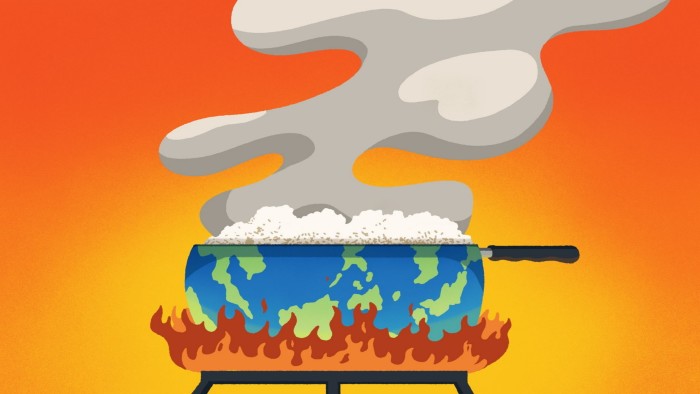Stay informed with free updates
Simply sign up to the Agriculture myFT Digest — delivered directly to your inbox.
The writer is a science commentator
There is more to rice than meets the fork. The grain, harvested from a semi-aquatic grass, is a staple food for over half of the world’s population. Many countries in Asia have strategic rice reserves: this year, Japan dipped into its national stockpile for the first time since the 2011 tsunami, to counter panic-buying and soaring prices.
Nations are chasing self-sufficiency, with China this week announcing a 10-year agricultural master plan for domestic food security. Indonesia has earmarked an area the size of Jamaica on the eastern fringe of its sweeping archipelago to develop new rice farms.
But there are thorns among the grains, in Indonesia and elsewhere. Researchers have told the journal Science that the South Papua megaproject is doomed to fail, given the poor soil, a relatively dry climate and Indonesia’s questionable record of similar efforts. Its government has also been accused of seizing land from indigenous peoples to pursue its aims.
Legal action by Greenpeace, meanwhile, has blocked the commercial cultivation of genetically modified Golden Rice in the Philippines, putting the brakes on an innovation slated to save lives by enriching diets with vitamin A. In a world already beset by food insecurity, climate change, water scarcity and conflict, the future of one of its most important foodstuffs is mired in a heady stew of science, politics and economics.
The disquiet about Indonesia’s 1mn hectare rice project comes after previous failed attempts to make up for paddies lost to development on Java, the country’s most populous island. A 1990s bid to turn vast swaths of wet peatland in Borneo into rice paddies foundered: draining the wetlands exposed pyrite-rich soils to the air, producing sulphuric acid and making the acidic soil unviable for rice farming. The cleared land was then prone to both drought-induced and deliberate wildfires.
A subsequent plan to expand potato and onion farming in North Sumatra clashed with scientific advice that the volcanic soil was unsuitable. Farmers have now mostly abandoned those lands too, the journal reports. That record, plus the lack of a soil feasibility study for the new project, has left scientists doubtful once again.
Guy Kirk, professor of soil systems at Cranfield University in England and a member of the UK Rice Research Consortium, says he understands the concerns. “It is a classic tidal swamp area with acid sulphate soils, which can become disastrous if not managed properly,” he tells me. The Indonesian government has responded to similar, previous criticisms by saying it will plant new varieties to suit the conditions, if necessary.
Breeding rice varieties to match local environments is one way to increase yields. Kirk estimates that global rice output needs to rise by about 15-20 per cent — using less water and producing less carbon — to meet demand over the coming decades, particularly from Africa (in 2023, South Korea launched the soft power K-Rice Belt Initiative to help 10 African nations improve rice production).
But climate change has made the wet seasons wetter and the dry seasons drier — and rendered yields unreliable. That has spurred work at places like the International Rice Research Institute, which has outposts across Asia and Africa, to develop plants capable of tolerating drought and withstanding submergence.
Optimising crop management, through irrigation and fertiliser use, can also close the so-called yield gap. A more moonshot approach, called the C4 Rice Project, is aimed at radically increasing the efficiency of photosynthesis, a limiting factor in crop yield. The international project to engineer new photosynthesis pathways in rice, which started in 2006, is bankrolled by the Gates Foundation and administered by Oxford university. Other research is aimed at improving micronutrient content or lowering the glycaemic (GI) index; Kirk’s own rice research ranges across iron and zinc content, and arsenic contamination.
One of his projects, with partners in Germany and the US, is currently on hold, a casualty of the sweeping cuts made to science budgets on President Donald Trump’s watch. Renowned institutes such as the IRRI — which released the world’s first high-yield rice variety, IR8, which kick-started Asia’s green revolution and averted famine — are also wilting as overseas aid falls away. “That’s bad news for science,” Kirk says.
It is also unappetising news for a world that will still be facing climate change, water scarcity and conflict in years to come — only with more mouths to feed.
